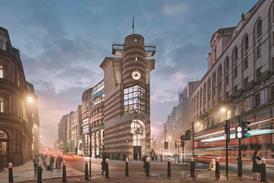- Home
- Intelligence for Architects
- Subscribe
- Jobs
- Events

2025 events calendar Explore now 
Keep up to date
Find out more
- Programmes
- CPD
- More from navigation items
Historic buildings are never in stasis. Why would it be any different for landscapes?

We need to approach landscape conservation with the same nuance and care that we show to buildings, write Patrick James and Dorian Proudfoot
For those who work in the historic built environment, it’s easy to treat buildings in isolation from related plants and landscapes. But in addition to the statutory requirement to protect the setting of listed assets under Sections 16 and 66 of the Planning (Listed Buidings and Conservation Areas) Act 1990, bolstering the relationship between a building and its natural environment will enhance the significance of the site as a whole.
An historic landscape can be assessed similarly to other forms of cultural heritage. One would assess the value of the landscape by its condition; how it appeals to the senses; the rarity of its elements and features; if it’s an important representation of a type of landscape, garden or plant; conservation interests such as wildlife or archaeological features; significant perceptual qualities like wilderness or tranquillity; association with a particular person, event or group of people of significance; and connections to a group of people or person of relevance.
…
This content is available to registered users | Already registered?Login here
You are not currently logged in.
To continue reading this story, sign up for free guest access
Existing Subscriber? LOGIN
REGISTER for free access on selected stories and sign up for email alerts. You get:
- Up to the minute architecture news from around the UK
- Breaking, daily and weekly e-newsletters
Subscribe to Building Design and you will benefit from:

- Unlimited news
- Reviews of the latest buildings from all corners of the world
- Technical studies
- Full access to all our online archives
- PLUS you will receive a digital copy of WA100 worth over £45
Subscribe now for unlimited access.






